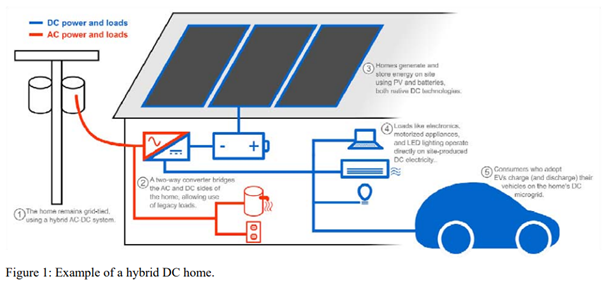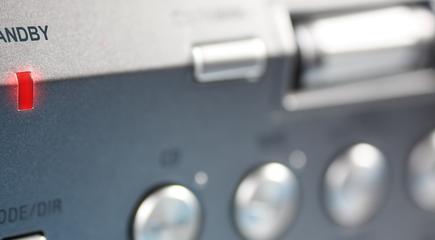The Future of Electricity in Our Homes

For over a century, alternating current (AC) has been powering devices in our homes, initially for lighting, then later for appliances and electronics as well. Because it was less expensive to distribute, AC established itself as the new standard for mains electricity.
However, with sources to produce electricity transitioning from coal, petroleum, and natural gas to renewables, like wind and solar, direct current (DC) appears to be making a comeback. Take solar for instance. Photovoltaic (PV) panels and storage batteries natively produce and store DC electricity. When coupled with the growing number of lighting products and electronics requiring DC inputs, it seems quite compelling to focus on a DC-only transmission and distribution scheme.
According to a paper1 published at the 2016 ACEEE Summer Study on Energy Efficiency in Buildings, about one third of household electric load today is natively DC. Beyond lighting and electronics, many appliances and HVAC products also utilize brushless DC (BLDC) motors with variable-speed drives, including ceiling fans, HVAC circulation pumps, dishwasher pumps, and refrigerator compressors.
On top of this, sales of electric cars (with their DC batteries) are booming. The 2023 edition of the IEA’s annual Global Electric Vehicle Outlook shows that sales were expected to grow by another 35% in the year and reach 14 million after a record-breaking 2022.

The paper also examines several potential technology adoption paths, ranging from full-home platforms to hybrid solutions, including the more modest “DC garage.” Figure 1 from the paper shows an example of a hybrid DC home.
To support such adoption paths, the U.S. Department of Energy is collaborating with Lawrence Berkeley National Laboratory and Power Integrations to develop a 240W USB-C in-wall receptacle to study a potential ecosystem leveraging USB-C as a universal DC plug-load standard. Project deliverables align with multiple goals from DOE’s Building Technologies Office. These include greenhouse gas emissions reductions by a 3% to 8% increase in efficiency per plug load, power system decarbonization through renewable integration in DC buildings, and waste reduction by improving life-cycle cost through wall receptacles versus adapters and by using common USB-C chargers.
Despite the great promise of energy savings for a DC bus architecture, there are significant challenges and barriers to such a big market transformation. While energy efficiency initiatives have historically focused on individual products, DC-ready homes will require engagement across a much broader range of stakeholders, including homebuilders, electricians, consumers, utilities, and policymakers. Organizations like the EMerge Alliance continue to develop DC power distribution standards at the building level.
So, although we have yet to see a fully DC-ready home make it into an Idea House of Sunset Magazine, that day will hopefully come soon! In the meantime, it’s refreshing to see how a 1950s bungalow is transformed into the energy-efficient home of the future by Camille Styles, owner of Sunset’s 2023 Idea House. Hint! Use smart outlets.
1 Stephen Pantano (CLASP), Peter May-Ostendorp, PhD (Xergy Consulting), and Katherine Dayem, PhD (Xergy Consulting) - “Demand DC: Adoption Paths for DC Power Distribution in Homes,” 2016 ACEEE Summer Study on Energy Efficiency in Buildings





